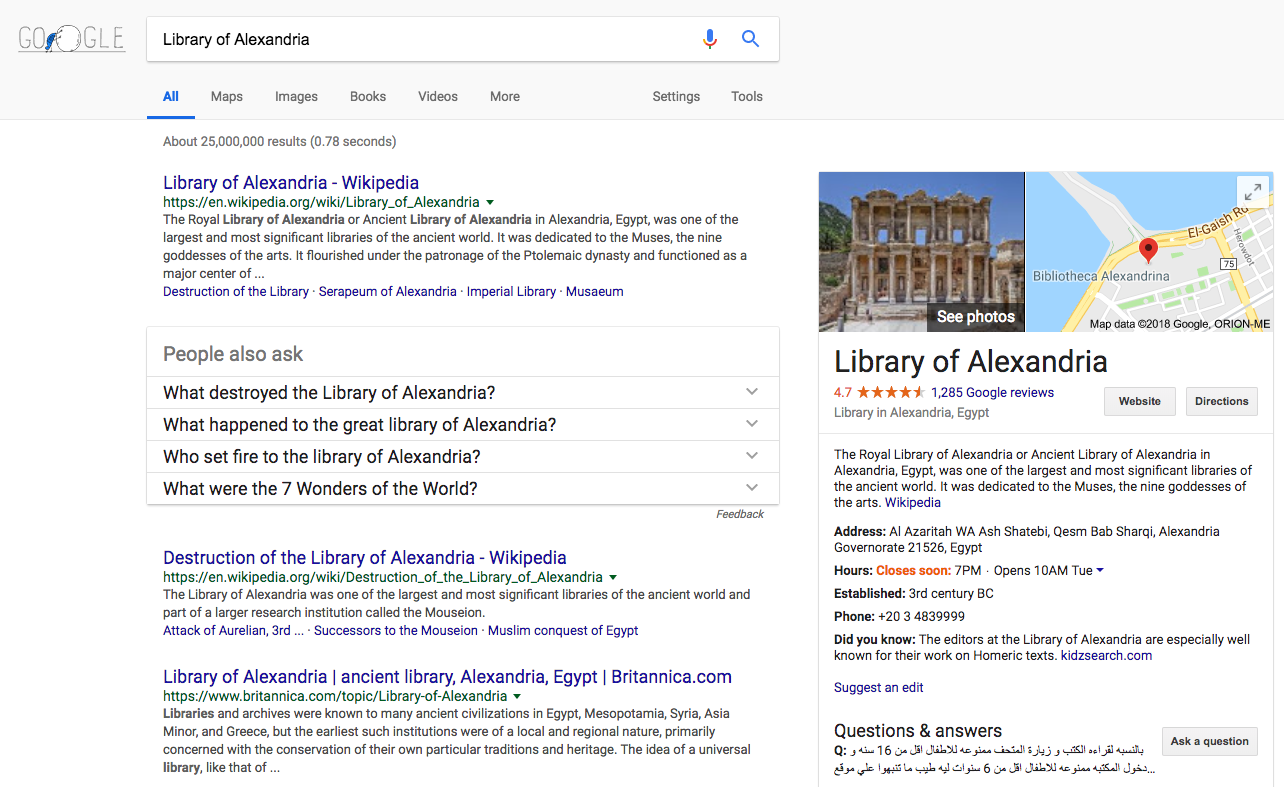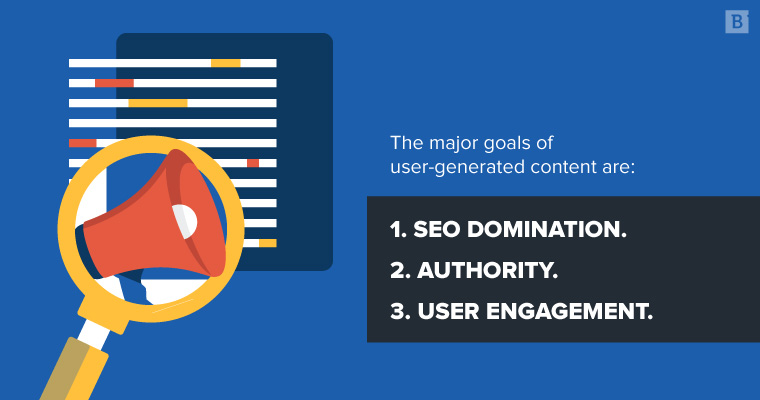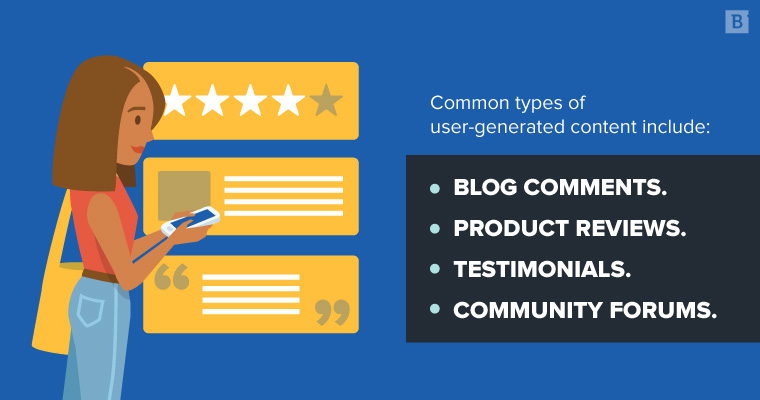Have you ever left a comment on a blog post? Edited a wiki article? If you saw a can of Coke with your name on it, would you snap a picture and post it to Instagram with a specific hashtag?
These are all examples of user-generated content.
If you haven’t heard, user-generated content (UGC) is an inexpensive yet powerful way to give your traditional marketing strategy a boost.
But what is user-generated content?
UGC is any content created and submitted by your audience.
Usually, it’s not the same type of content you submit yourself. Some common types of UGC include:
- Blog comments.
- Product reviews.
- Testimonials.
- Community forums.
That said, UGC and your standard types of comments can overlap. B2C brands like Coke and Starbucks will often create social campaigns that encourage users to submit tweets or Instagram pictures featuring a related hashtag.
Psst! Want to know one of the greatest examples of UGC on the internet? You might be surprised: It’s Wikipedia.
Wait, really?
Indeed! Wikipedia is the Library of Alexandria of UGC; almost every page on the website was created by the Wiki community. Wikipedia accomplishes the major goals of UGC, which are:

- SEO domination. More often than not, Wikipedia is the first Google result for a given topic.
- Authority. Although the content is created by average users, people trust the information they read here.
- User engagement. Wikipedia has a dedicated community of contributors who actively enjoy participating in the website.
What makes Wiki’s content so effective is that it has an extensive moderation and approval system. Sure, someone people post prank edits, but Wiki moderators would correct the situation quickly to maintain the brand’s integrity.

We’ll discuss this idea in more detail later, but this is why a good UGC strategy includes some form of moderation. But first, let’s dive deeper into the benefits of UGC.
UGC: Effective marketing in a flash
If implemented correctly, a UGC strategy helps you accomplish a number of your marketing goals with less time and money:
Free unique content
Tools like BrightEdge and MarketMuse are great for creating targeted, comprehensive content. They help you optimize past pieces and create new ones by identifying the information your competitors cover and what they – and you – have missed.
That said, if everyone uses these same marketing tools, wouldn’t that mean everyone’s content starts looking the same?
UGC avoids this trap, giving you unique content at no cost. Instead of spending hours brainstorming fresh and unique ideas, your readers give such content without a second thought.
Improves your website’s relevance
Google search algorithms are notoriously frustrating because they’re always changing. That said, these changes are a good thing, as they’re designed to help the search engine better identify the user’s intent.
On the other hand, they mean brands must constantly adjust their SEO strategies to improve their chances of ranking on the first page. Every time Google updates, you need to better identify what your audience is looking for.
UGC, in a way, helps you avoid speculating on what users want. In fact, it gives you a bit of a Google boost by letting users hand you the exact information your audience wants. This content is usually chock-full of relevant keywords that’ll be picked up by the search engine.
Helps marketers better strategize content and keywords
UGC audience participation is another metric (in addition to click-through rate, time spent on site, etc.) that helps marketers gauge interest in a particular topic. Furthermore, it can provide ideas for new blog posts, downloadable assets and social media content. Plus, common phrases in UGC are perfect long-tail keywords to use in your future pieces. In fact, you should keep note of the topics your users frequently discuss, then expand on these in your blog articles, email campaigns and white papers.
Builds social proof
People trust thought leaders, but they also trust their peers. This means that UGC is a great way for your brand to build social proof. As new readers see you have a large library of existing user content and/or an active following, they’ll be more likely to trust your company.
Testimonials and case studies are great for this. Try to include direct quotes and metrics in your case studies for added authenticity.

Creating a UGC strategy
As with any marketing strategy, UGC requires a tailored approach. Here’s what to do:
Review your audience
First, use your existing data to determine the basics of your UGC campaign. Are your audience members avid Instagram users? Start a photo-based campaign with a relevant hashtag. Alternatively, if your readers are quick to provide feedback whenever you ask for it, enable comments on your blog posts or establish a community forum so they can share their thoughts freely.
Use existing UGC for further insights to enhance your strategy
What sort of content does your audience provide when given limited restrictions? Which of these receives the most engagement? What topics or phrases are reccuring?
Answering these questions allows you to create a more efficient, targeted UGC strategy.
Depending on the type of content you ask for, you can make your life even easier by having users do some of the SEO backend for you. Moz had some good suggestions for this strategy, including:
- Requiring minimum and maximum title lengths, which increase the likelihood of users including keywords but without making titles overly long.
- Creating a mandatory field for content descriptions.
- Automatically suggesting popular or relevant tags or hashtags for users to add.
- Letting users select related content or automatic embeds.
Keep in mind, as Moz noted, that these suggestions may compromise usability, so incorporate them wisely.
In addition, the topics and phrases you identify also let you enhance your traditional content. Recurring terms will become your new long-tail keywords while repeated ideas or questions will become your new blog posts, eBooks and white papers.
Collect your UGC on a perfectly optimized page
Chances are that your UGC will never be perfectly optimized, even if you use the suggestions above. However, if you collect all of this content on your website, then you can create a perfectly optimized landing page linking visitors to your UGC. If, for example, you create a Twitter campaign, collect some of the most popular tweets and embed them on a landing page with a relevant, targeted title, content and meta tags.
Connect with users who provide content
People who provide your UGC are essentially telling you that they’re ready to move through your sales funnel. Send them a direct mail or message on social platforms, or collect their email addresses and send followups. Whatever method you choose, make sure your message contains a CTA linking users to your sales page, exclusive promotions or other articles and content they may be interested in.
Continuously manage user-provided content
You’ll need to monitor any submitted content to prevent your strategy from backfiring. This is what Wikipedia is so great at, as noted above.
Be on the lookout for spam posts, which hurts your authority, search rankings and – therefore – traffic. Also, if you decide to accept customer reviews, be responsible with how you respond to them. Potential customers will judge your brand for how you deal with complaints, and you might face a backlash or diminished social proof if you delete or hide negative comments.

Encouraging audience participation
It’s an understandable fear: Your brand isn’t popular enough to compel people to submit their content. Don’t worry; we’ve got a few tips to help you collect as much UGC as possible.
Start on social media…
Begin your UGC strategy by engaging your audience on platforms with the smallest barriers to entry. In all likelihood, anyone who wants to submit content already has a LinkedIn, Twitter, Facebook or Instagram account, and they use these platforms every day. They understand how these websites work and don’t have to create new credentials for them, so they’re more likely to engage with you.
Once you’ve built a healthy, active social following, you can work on a cross-platform engagement strategy.
…but don’t forget your website
While social media is a simple way to start your strategy, you should still have areas on your website for readers to submit UGC, no matter how small your following may be at the time. Adding a widget to enable blog comments (such as Disqus, which we use) is simple, and it allows people to post comments as they read without waiting for you to decide you have a big enough audience first.
Showcase top-performing content
Recognizing content with the most likes, comments or clicks makes the original poster feel good about your brand and increases the likelihood that he or she will continue to engage. Create an email newsletter or weekly blog posts rounding up your top UGC hits, or feature comments and wiki/help desk posts on a specific landing page.
Even something as simple as a response to a blog comment can increase engagement and social proof while portraying your business positively.
Who should use UGC?
With low risks, zero cost and high rewards, there’s no reason for any brand to avoid using UGC. Even B2B companies can benefit from such a strategy, especially if they promote user content during industry events and conferences.
To sum it all up: UGC is the simple finishing touch that every marketing strategy needs.
Of course, we’d like to hear your comments and thoughts! Has UGC worked for your company? How did you get started?





